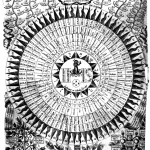For those of us who grew up having our childhoods captured on these wildly popular, affordable cameras — and who remember them as fixtures at countless birthdays, Christmases, baby showers, vacations — this is really sort of sad.
The Eastman Kodak Company said on Thursday that it would stop making digital cameras, pocket video cameras and digital picture frames, signifying the end of an era for the company that brought photography to the masses more than a century ago.
Founded by George Eastman in 1880, Kodak was known all over the world for its Brownie and Instamatic cameras and its yellow-and-red film boxes. But the company was battered by Japanese competition in the 1980s, and was then unable to keep pace with the shift from film to digital technology.
The company, which filed for bankruptcy protection last month, said it would phase out the product lines in the first half of this year and would look for other companies to license its brand for those products.
It is a seemingly poignant moment for Kodak, which is based in Rochester. In 1975, using a type of electronic sensor invented six years earlier at Bell Labs, a Kodak engineer named Steven Sasson created the first digital camera. It was a toaster-size prototype capturing black-and-white images at a resolution of 0.1 megapixels.
Through the 1990s, Kodak spent some $4 billion developing the photo technology inside most of today’s cellphones and digital devices. But a reluctance to ease its heavy financial reliance on film allowed rivals like Canon and the Sony Corporation to rush into the fast-emerging digital arena. The immensely lucrative analog business Kodak worried about undermining was virtually erased in a decade by the filmless photography it had invented.
Today, the stand-alone digital camera faces stiff competition, as smartphone cameras gain broader use. Kodak owns patents that cover a number of basic functions in many smartphone cameras. The company picked up $27 million in patent-licensing fees in the first half of 2011. It made about $1.9 billion from those fees in the previous three years combined.
Kodak considers home photo printers, high-speed commercial inkjet presses, workflow software and packaging to be the core of its future business. Since 2005, the company has poured hundreds of millions of dollars into new lines of inkjet printers. Once the digital camera business is phased out, Kodak said its consumer business would focus on printing.











